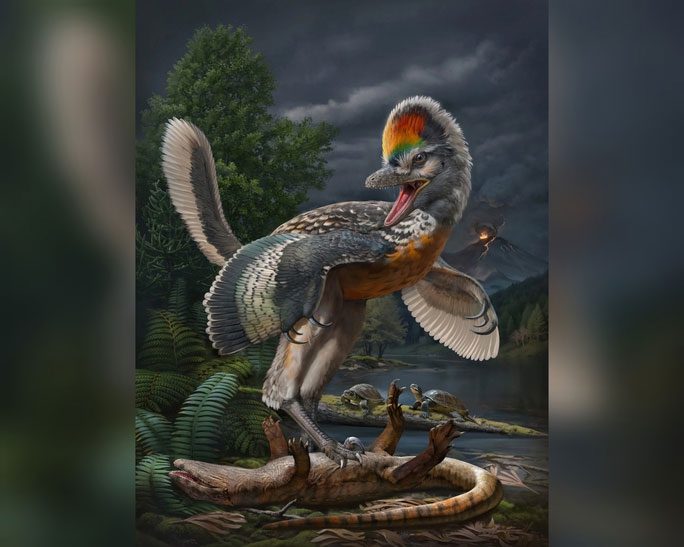A 150-million-year-old fossil found in Fujian Province, China, features a head, wings, and plumage resembling those of a legendary bird, yet its legs and claws are terrifyingly similar to those of a T. rex.
The research team, led by Dr. Min Wang from the Institute of Vertebrate Paleontology and Paleoanthropology under the Chinese Academy of Sciences, has named this newly discovered fossil Fujianvenator prodigiosus, which means “extraordinary creature from Fujian.”
This is a completely new species that belongs to the Avialae branch of the dinosaur family. This branch is the only one that includes living dinosaurs on Earth, specifically birds.

“The bird of Fujian” reimagined by scientists – (Graphic: Chuang Zhao).
Research on creatures from the group of bird-like dinosaurs has faced many obstacles due to the scarcity of Jurassic fossils found. The late Jurassic period is when Avialae diverged from their common lineage with theropod dinosaurs, which includes the infamous T. rex.
Thus, the emergence of Fujianvenator prodigiosus is a particularly valuable discovery in paleontology. It represents a creature from that “transitional” phase, an early Avialae that exhibits many characteristics similar to theropod dinosaurs, according to a publication in Nature.
According to Dr. Wang, this fossil could be one of the key pieces in deciphering the evolutionary origins of characteristic flying bird forms, as well as the first global diversification era of birds during the Cretaceous period.
“The bird of Fujian” is only the size of a pheasant but was an extremely fierce carnivorous dinosaur, living in a swampy environment, capable of running or swimming at high speeds with agility.
The reconstructed image depicts a creature with a stunning upper body resembling the legendary bird, yet the tips of its wings end in sharp claws. Its lower body remains quite robust, featuring T. rex-style strong legs, along with a dangerously toothed beak.
The significant difference from theropods lies in the strength and flexibility of its upper body and forelimbs. Rather than possessing the diminutive, almost vestigial arms typical of T. rex, its feathered arms function like wings, showcasing an evolutionary trajectory leading to the typical proportions of birds.
“However, Fujianvenator prodigiosus is a peculiar species that has diverged from the main evolutionary trajectory and developed bizarre hind limb structures” – Dr. Wang stated.
This dinosaur is part of the Zhenghe Fauna, which includes numerous bizarre ancient species, recently discovered in Zhenghe County, Nanping City, Fujian Province.


















































